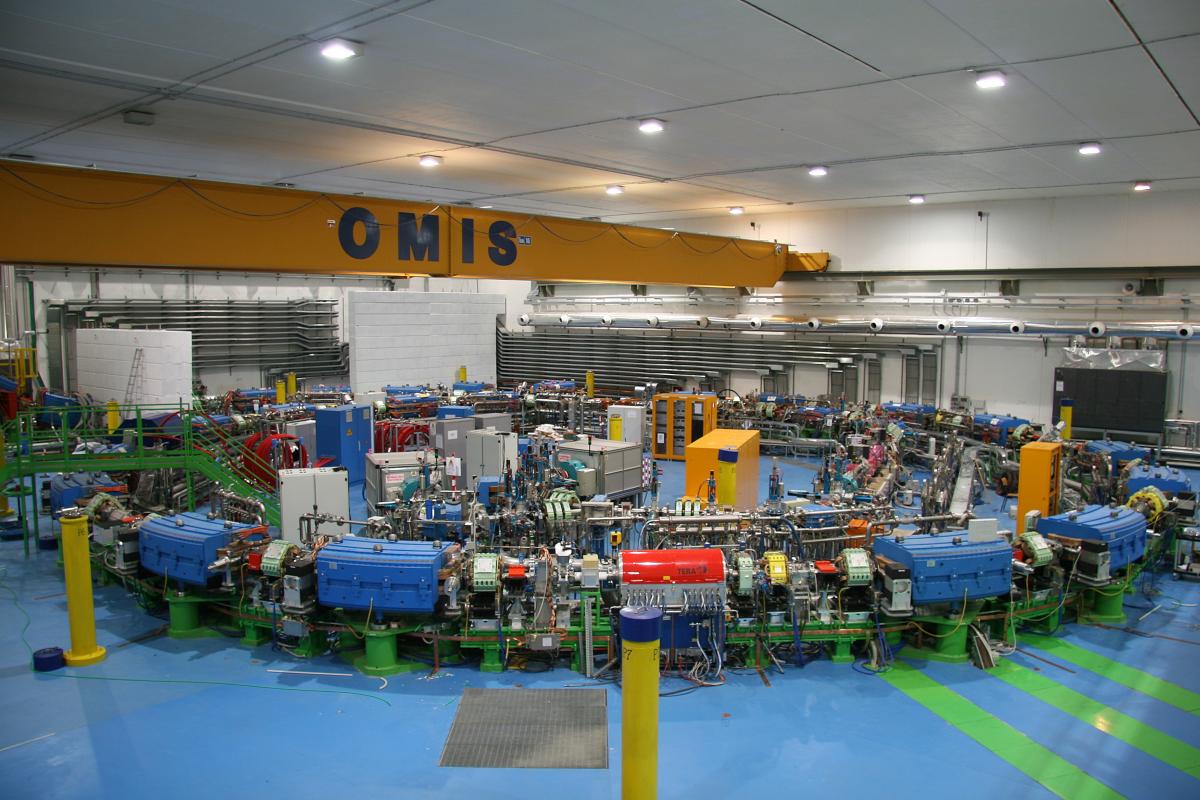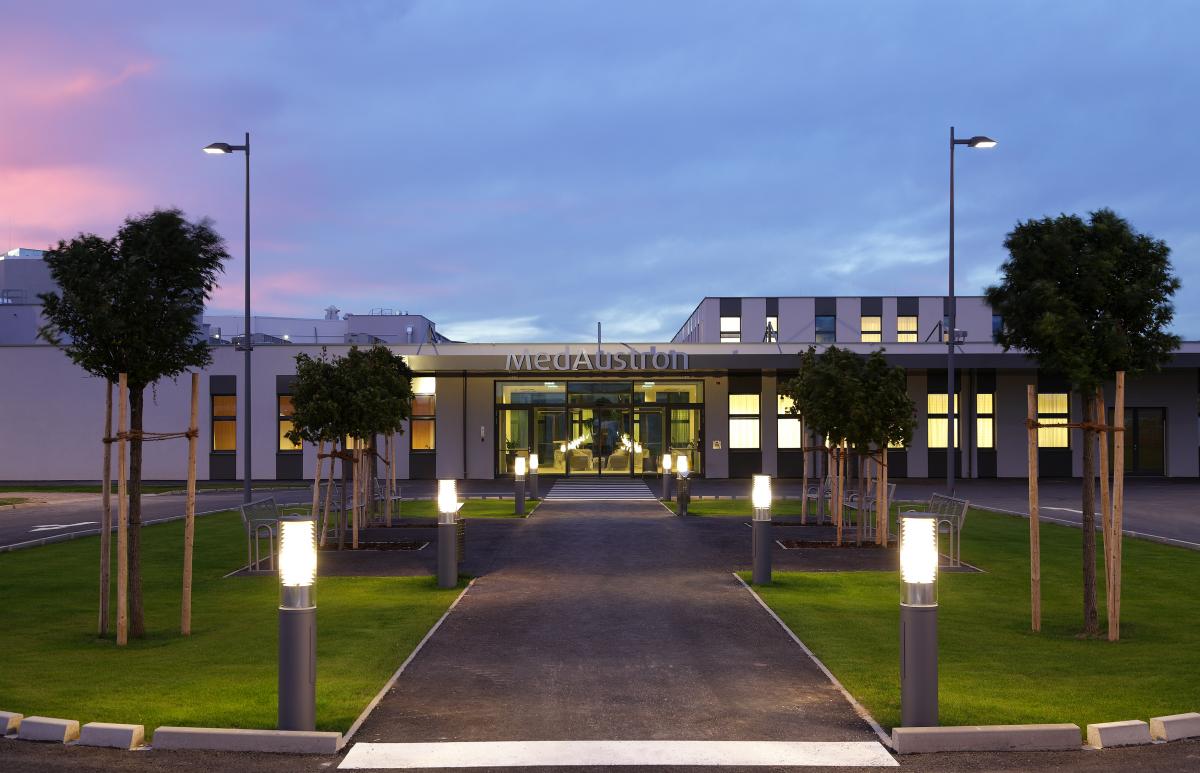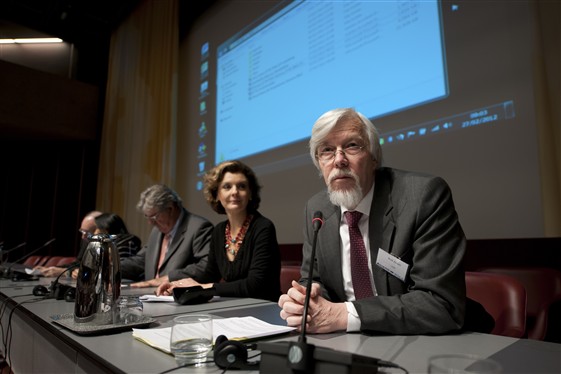4 pillars of wisdom: CERN technologies find medical applications
State-of-the-art techniques borrowed from particle accelerators, detectors, and physics computing are increasingly used in the medical field for the early diagnosis and treatment of tumours and other diseases. But an essential ingredient to catalyse successful multidisciplinary ventures is the collaborative spirit that is a core value of CERN. The next ICTR-PHE conference in February 2014 is an opportunity to see this collaborative approach in action.
The three major pillars or technology domains at CERN are accelerators, detectors, and computing. These tools of the trade of particle physics find applications in a variety of fields, and sometimes have a societal impact that goes beyond their initial scope and expectations: think about the World Wide Web. In the healthcare sector, many important diagnostic and therapeutic techniques have been built on either basic physics principles, or the technologies developed to conduct physics research.
Accelerators are routinely used in hospitals for conventional cancer radiotherapy with X-rays. In addition, about 40 centres around the world treat tumours with hadron therapy, an advanced technique of radiotherapy that uses protons and other ions to target the cancerous mass. Cancer therapy with protons has become a mainstream clinical modality, and a few facilities around the world also use carbon ions. CERN has been collaborating to the design and testing of two last-generation dual facilities, designed to provide both proton and carbon ion beams: CNAO in Pavia, Italy, which started treating patients in 2011, and MedAustron in Wiener Neustadt, Austria, which will start treatments in 2015. CERN is also part of the ULICE project, led by CNAO, which connects both existing and future facilities.

CNAO treatment room (photo courtesy: CNAO)

CNAO accelerator (photo courtesy: CNAO)
The open question to medical doctors and radiobiologists is which ions are most suited to treat a certain tumour. CERN is actively investigating how to adapt the LEIR accelerator to provide suitable beams to the medical community to determine how cells and biological material respond to different ions.

The MedAustron facility (photo courtesy: MedAustron)
Accelerators can also be used to produce radioisotopes, which are the essential tool of nuclear medicine. Depending on their characteristics, radioisotopes can be used for diagnosis or treatment of suitable cancers. Some “multitasking” radioisotopes can be used for both purposes, and more research is needed to identify and study these special cases. The CERN-MEDICIS project1 will use beams from the ISOLDE complex to generate custom radioisotopes for clinical research: partnerships are already in place with local hospitals and universites.
Frontier machines like the LHC push particle detectors beyond state-of-the-art to achieve the needed resolution and speed. These advances have been fuelling new developments in medical imaging since the first Computed Tomography (CT) scanners in the 70s. A notable example is the medical imaging technique known as positron emission tomography (PET), which emerged in the medical community, but whose technology owes much to research in particle physics. Cross-fertilization between particle physics detectors and imaging tools is constantly bringing benefits to the medical field; these are not only related to diagnosis, but also to therapy: for example, faster and more sensitive detectors can allow for in-vivo monitoring in real time during therapeutic irradiation. CERN is leading various projects to harness the latest developments in detector technology and translate them into clinical applications: AX-PET, Medipix, Crystal Clear, ENVISION, EndoTOFPET-US.
Particle physics also makes heavy use of large-scale computing. Grids are ideal tools not only to handle LHC data, but also for a wide range of biomedical applications, from screening of drug candidates to image analysis, to sharing and processing health records. Monte Carlo simulation tools developed for particle physics are also being used in the medical field: for example, Fluka is used for treatment planning in hadron therapy facilities, and Geant4 is being extended to model early biological damages induced by ionising radiation at the DNA scale.
Besides technology, the world of particle physics brings to society a brilliant example of collaborative approach the, underlying 4th almost invisible but essential pillar: CERN now counts more than ten thousand users from more than a hundred countries, and the experiments at the LHC are run by some of the largest scientific collaborations in history. The challenge is to apply this successful model to multidisciplinary collaborations in the healthcare field: “A fruitful transfer of knowledge and technology from fundamental particle physics research to the biomedical domain can be catalysed and enhanced if medical doctors, biologists, physicists and engineers exchange information, identify challenges, and develop together global strategies.” says Manjit Dosanjh, CERN’s Life Sciences Advisor and member of the Knowledge Transfer group.
This vision brought to the establishment of ENLIGHT, the European Network for Light Ion Hadron Therapy, which had its inaugural meeting at CERN more than ten years ago, in February 2002. About 70 specialists from different disciplines, including radiation biology, oncology, physics and engineering, attended this first gathering: this was a considerable achievement, in a time when “multidisciplinarity” was not yet a buzz word. The network today counts over 400 participants from more than 20 European countries, and has been instrumental in unifying the European hadron therapy community through two complementary approaches: research in areas needed for highly effective hadron therapy, and networking, to establish and implement common standards and protocols for treating patients.

ENLIGHT 10 years anniversary at CNAO (photo courtesy: ENLIGHT)
Catalysing new opportunities in emerging multidisciplinary fields means also training the next generation of experts in these novel disciplines. In this perspective, CERN coordinates numerous multidisciplinary training programmes: PARTNER, PicoSEC and ENTERVISION.
This same vision brought CERN to organise the Physics for Health in Europe (PHE) workshop in 2010, and then to join forces with the established International Conference on Translational Research in Radiation Oncology (ICTR), chaired by Prof. Jacques Bernier who heads the Radiotherapy department at the Genolier Clinic in Switzerland. This partnership resulted in the ICTR-PHE conferences, which provide a much-needed occasion for scientists from many different disciplines to discuss scientific advances, and the seeds planted at these meetings are giving life to new and exciting projects such as BIOLEIR and MEDICIS.

The conference is opened by Rolf Heuer (CERN Director General), Ruxandra Draghia-Akli (Director for Health in DG Research and Innovation of the European Commission), Pierre-François Unger (Président du Conseil d’État de Genève), together with the conference chairs.
The next ICTR-PHE conference, co-chaired by Jacques Bernier and Manjit Dosanjh, will take place at the CICG conference centre in Geneva from 10 to 14 February 2014. The programme includes sessions devoted to detectors and medical imaging, novel technologies, hadron therapy and nuclear medicine. More information about registration can be found at http://cern.ch/ictr-phe14.
1MEDICIS is supported by the Hôpitaux Universitaires de Genève, the Centre Hospitalier Universitaire Vaudois (CHUV) in Lausanne and the cancer research institute ISREC of the École Polytechnique Fédérale de Lausanne.
